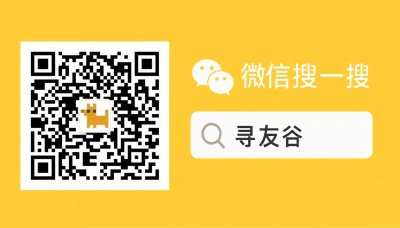Why changing your WeChat password matters — a quick scene
Last month at a visa orientation in Shanghai, a handful of US students laughed about how WeChat runs their lives here — rent chats, class groups, and that weird boss who messages at midnight. But then Mia from Boston went quiet: her WeChat flagged a login from another city and she’d lost access for a day. The panic was real — missed rent messages, delayed group projects, and a small amount of real-world embarrassment.
If you’re an American living in China, or a student planning to arrive, WeChat is your inbox, wallet messenger, and neighborhood noticeboard. Losing access or being hacked isn’t theoretical — it can affect tuition payments, apartment deposits, even safety. This guide walks you through how to change your WeChat password (and related protection steps) in practical, no-nonsense language. We’ll also explain when to use email reset, SMS, or WeChat support, and what to do if you can’t get back in. No fluff — just what works.
The mechanics: how WeChat password reset really works (and the problems you’ll face)
WeChat’s account security sits behind several routes: a password/PIN for login, a linked phone number or email, and a “verification” system that may ask friends or device approvals. If you remember your password, change it inside the app. If you don’t, use the reset flow linked to your account email or phone — or the “Help Center” flow on the login screen. The UX borrows familiar patterns from other services: request reset link to email, get SMS code, or ask WeChat to verify via friends or ID.
Why this becomes messy for Americans and international students:
- Many US students use an international phone number. SMS verification sometimes fails on foreign SIMs in China because carriers treat foreign-origin SMS differently, or because the number isn’t properly linked in older WeChat accounts.
- Email-based resets can get stuck if you used a Chinese email provider or one you’ve since lost access to — and WeChat’s reset emails sometimes hit spam or are delayed.
- In some cases, you’ll be asked to verify identity via friends (a “friend confirmation” process). That’s great when you have classmates on your contacts list who can help — but not so great when you’ve just arrived and don’t know anyone yet.
- Customer support is a mixed bag. You can use in-app Help Center, but response times vary, and automated flows can feel like dead ends.
Practical example and context: many international students are shifting their study plans and countries (see global study trends such as increased remittances to Georgia for MBBS students) — a lot of people are moving, changing numbers, and juggling accounts, which increases account recovery friction [Source, 2025-11-02]. Meanwhile, visa and travel stress is rising globally — people who face tight visa windows can’t waste days fixing an account lock when they need to get consulate appointment messages [Source, 2025-11-02]. Add in universities policing admissions and account fraud more strictly, and you’ll see why secure account handling matters for students everywhere [Source, 2025-11-01].
Step-by-step: change your WeChat password when you still have access
If you can log in, do this now — takes two minutes and saves headaches later.
- Open WeChat → Me → Settings → Account Security.
- Tap “Password” or “Change Password”.
- Enter current password, then new password. Use a strong passphrase: 12+ characters, mix of letters and numbers, avoid obvious place names or “wechat123”.
- Turn on two-step protections: link a working phone number (preferably the local SIM where you live) and an email address you control.
- Under Account Security, enable Device Management and log out of any devices you don’t recognize.
- Make a note (securely) of the recovery email and phone you linked, and update them if you’ve changed numbers since you opened the account.
Why link a local SIM? SMS verification tends to be most reliable on the SIM used day-to-day. If you plan to travel often, add a U.S. number as a secondary contact and an active email.
Quick tips:
- Use a password manager (Bitwarden, 1Password). It’s safer than reusing variants of the same password.
- If you use WeChat Pay, set a separate payment password. This is the one used for transfers and in-app payments — different from login password.
If you forgot your password: recovery routes that actually work
Option A — Reset via linked email:
- On the WeChat login screen, tap “Forgot Password” → choose “Email”.
- Enter your account email or screen name, complete CAPTCHA.
- WeChat will send reset instructions. If you don’t see it, check spam, and use a browser search on mail servers for blocked messages.
Option B — Reset via phone/SMS:
- Choose “Phone Number” on the reset screen, fill in the number, and complete SMS verification.
- If SMS doesn’t arrive: ensure the country code is correct, try a local SIM, or use a college number (many campuses provide local SIM plans).
Option C — Friend Verification (if email/phone fail):
- WeChat can request identity confirmation by asking several contacts to verify you.
- Procedure: On reset flow, select “Verify via friends”, choose 3–5 close contacts on WeChat. They’ll get a prompt to confirm your identity. This is handy if you’re new to China but already have classmates or tutors in your contact list.
Option D — WeChat Support / Help Center:
- Use the “Help & Feedback” inside the app (Me → Settings → Help & Feedback) or submit a request on the web page.
- Be ready to provide associated email, phone numbers, screenshots, and the last login time. Support can ask for ID verification.
If none of the above works:
- Create a new WeChat account with a new email and start rebuilding contacts — keep the old account attempts alive and check periodically in case support restores access.
- For critical accounts (WeChat Pay holding deposits), escalate with university admin or landlord for temporary payment windows while you recover or create a new account.
Preventive moves for the modern student/US expat
- Keep recovery contact info current: update email & phone right after you change your number or school.
- Add a consistent second email (Gmail works best for international use).
- Teach one trusted friend how to confirm your identity in WeChat’s friend-verification flow.
- Don’t store passwords in WeChat chats — that’s asking for trouble.
- If you suspect compromise: change passwords for everything linked to that WeChat (email, banks, major services).
🙋 Frequently Asked Questions (FAQ)
Q1: I lost my Chinese SIM and can’t get SMS codes — how do I reset WeChat?
A1: Use these steps:
- Try email reset first: Me → Settings → Account Security → Forgot Password → Email.
- If email isn’t linked or accessible, use the friend-verification route: select 3–5 trusted contacts to verify you.
- Contact WeChat Help & Feedback with proof: screenshots of account profile, linked email, previous transaction records (for WeChat Pay), and a copy/photo of your passport. Submit via the in-app Help Center or the web support portal.
Q2: My WeChat was logged in from another city — should I change my password and what else?
A2: Yes. Immediate checklist:
- Change login password: Me → Settings → Account Security → Change Password.
- Review Device Management: log out unknown devices.
- Change WeChat Pay password (if used).
- Notify close contacts to ignore any suspicious messages sent from your account.
- Consider enabling or updating linked email and local phone number, and file a Help Center ticket with time/location evidence.
Q3: I’m an incoming student — how do I set up account recovery before arriving?
A3: Roadmap:
- Before travel, link a stable Gmail account and a US phone number (for backups).
- Add one or two classmates, family members, or the university admin as trusted contacts.
- Set a payment password different from login password if you plan to use WeChat Pay.
- Save recovery steps in your password manager and keep screenshots of linked contact info in a secure folder.
🧩 Conclusion
For US people and students using WeChat in China, password hygiene isn’t optional — it’s part of day-to-day survival. The mix of international numbers, campus moves, and study/travel life increases the odds you’ll need the recovery flows. Do the basic work: link a stable email, keep a local SIM when you can, and designate a friend for friend-verification. That little effort up-front saves a weekend of stress later.
Checklist — do these now:
- Link or confirm a working email (Gmail preferred).
- Connect at least one working phone number and enable device management.
- Set a separate WeChat Pay password if you use payments.
- Add 2–3 trusted contacts who can vouch for you in WeChat’s friend-verification.
📣 How to Join the Group
If you want a community that actually helps when things break: join XunYouGu’s WeChat groups. We’re practical, no-BS, and built for people exactly like you — American students, expats, and anyone juggling life in China. To join:
- Open WeChat, search “xunyougu” (pinyin) in Official Accounts.
- Follow the official account, then scan the QR code in the “Join Group” post, or add our assistant’s WeChat ID (find it on xunyougu.com) and request an invite.
- We’ll put you into a regional group where members share recovery tips, trusted service shops, and verified translators.
📚 Further Reading
🔸 Indian students prefer Georgia over Ukraine for MBBS studies, RBI reports fivefold remittance increase
🗞️ Source: Times of India – 📅 2025-11-02
🔗 Read Full Article
🔸 US Visa Shock: Indian Techie Earning Rs 1 Crore Denied Entry In Under A Minute; What Went Wrong?
🗞️ Source: The Daily Jagran – 📅 2025-11-02
🔗 Read Full Article
🔸 NUS to expel students with fake admissions; NTU to take disciplinary action
🗞️ Source: STOMP / The Straits Times – 📅 2025-11-01
🔗 Read Full Article
📌 Disclaimer
This article is based on public information, compiled and refined with the help of an AI assistant. It does not constitute legal, investment, immigration, or study-abroad advice. Please refer to official channels for final confirmation. If any inappropriate content was generated, it’s entirely the AI’s fault 😅 — please contact me for corrections.

